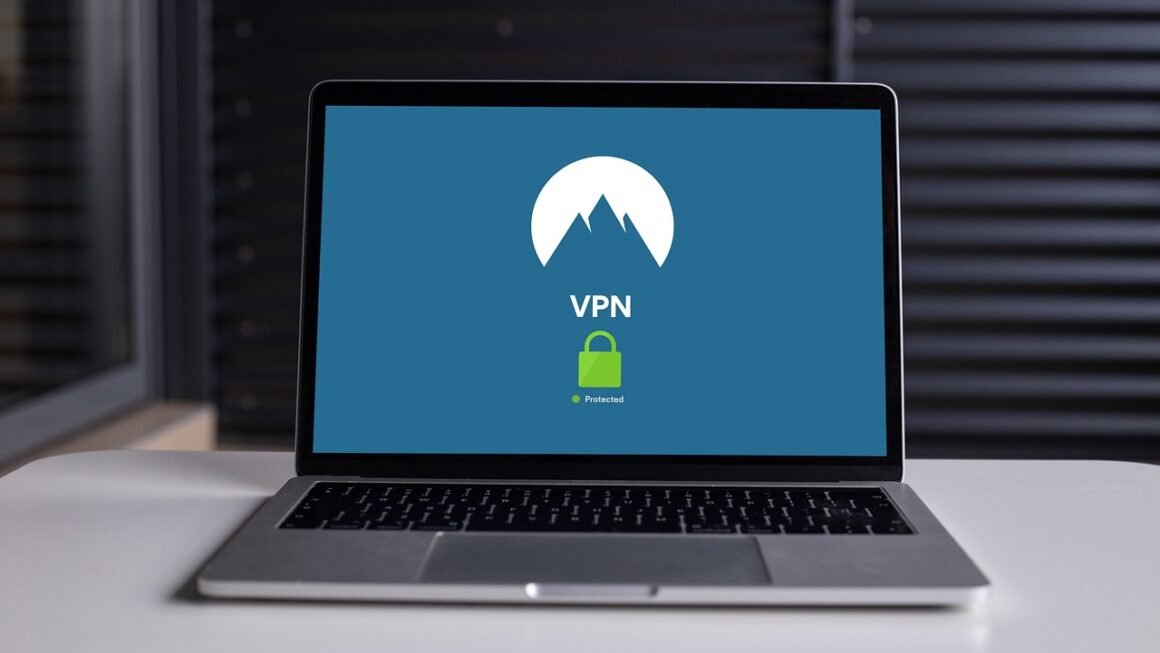In today’s interconnected world, the digital landscape is riddled with potential threats, making a robust cybersecurity policy not just an option, but a necessity. From protecting sensitive data to ensuring business continuity, a well-defined cybersecurity policy acts as a shield against the ever-evolving tactics of cybercriminals. Whether you’re a small business owner or part of a large enterprise, understanding and implementing effective cybersecurity policies is crucial for safeguarding your digital assets and maintaining a strong security posture. This comprehensive guide will walk you through the essential components of a robust cybersecurity policy, providing you with practical insights and actionable steps to protect your organization.
Understanding Cybersecurity Policy
A cybersecurity policy is a comprehensive set of rules, guidelines, and procedures designed to protect an organization’s digital assets and information from unauthorized access, use, disclosure, disruption, modification, or destruction. It serves as a roadmap for maintaining a secure environment and mitigating potential cyber risks.
Defining the Scope and Objectives
- Scope: Clearly define the assets, systems, and data covered by the policy. This includes hardware, software, networks, data storage, and communication channels.
Example: The policy should specify whether it covers employee-owned devices used for work (BYOD) and if so, under what conditions.
- Objectives: Outline the specific goals the policy aims to achieve. These objectives should be measurable and aligned with the organization’s overall business objectives.
Example: Objectives could include reducing data breach incidents by 20% in the next year or achieving compliance with specific industry regulations like HIPAA or GDPR.
- Practical Tip: Involve key stakeholders from different departments (IT, Legal, HR, etc.) in defining the scope and objectives to ensure comprehensive coverage and buy-in.
Key Components of a Cybersecurity Policy
- Acceptable Use Policy: Defines how employees and other authorized users are permitted to use company resources, including computers, networks, and internet access.
- Password Management Policy: Sets standards for creating, storing, and managing passwords to prevent unauthorized access. This often includes requirements for password complexity, length, and rotation.
- Data Security and Privacy Policy: Addresses the handling, storage, and transmission of sensitive data, including personal information. It should outline procedures for data encryption, access controls, and data retention.
- Incident Response Plan: Details the steps to be taken in the event of a cybersecurity incident, such as a data breach or malware infection. This includes roles and responsibilities, communication protocols, and procedures for containment, eradication, and recovery.
- Network Security Policy: Outlines measures to protect the organization’s network infrastructure, including firewalls, intrusion detection systems, and VPNs.
- Physical Security Policy: Addresses the physical security of IT assets, such as servers and workstations, to prevent theft or unauthorized access.
Developing an Effective Policy
Creating a cybersecurity policy isn’t just about ticking boxes; it’s about crafting a living document that reflects your organization’s unique needs and risk profile.
Risk Assessment and Analysis
- Identify Assets: Conduct a thorough inventory of all digital assets, including hardware, software, data, and networks.
- Identify Threats: Identify potential threats that could compromise these assets, such as malware, phishing attacks, insider threats, and denial-of-service attacks.
- Assess Vulnerabilities: Evaluate the weaknesses in your systems and processes that could be exploited by these threats.
- Determine Impact: Assess the potential impact of a successful attack on your organization, including financial losses, reputational damage, and legal liabilities.
- Example: Performing penetration testing to identify vulnerabilities in your network or web applications.
- Actionable Takeaway: Regularly update your risk assessment to reflect changes in your environment and emerging threats.
Tailoring the Policy to Your Organization
- Industry-Specific Regulations: Ensure your policy complies with relevant industry regulations, such as HIPAA for healthcare organizations or PCI DSS for businesses that handle credit card information.
- Organizational Culture: Adapt the policy to fit your organization’s culture and values. A policy that is too restrictive or difficult to understand is less likely to be followed.
- Business Needs: Consider the specific needs and priorities of your business. For example, a company that relies heavily on cloud services will need to have a strong cloud security policy.
- Example: A small business might have a simpler policy focused on basic security practices, while a large enterprise might need a more complex and comprehensive policy.
- Actionable Takeaway: Regularly review and update your policy to ensure it remains relevant and effective as your business evolves.
Implementing and Enforcing the Policy
- Communication: Communicate the policy clearly and effectively to all employees and other authorized users. Provide training and resources to help them understand their responsibilities.
- Enforcement: Enforce the policy consistently and fairly. This may involve disciplinary action for violations.
- Monitoring: Monitor compliance with the policy and track incidents to identify areas for improvement.
- Example: Using security information and event management (SIEM) tools to monitor network traffic and detect suspicious activity.
- Actionable Takeaway: Establish a clear process for reporting security incidents and ensure that employees know how to report them.
Employee Training and Awareness
Your employees are your first line of defense. A well-trained workforce is significantly more resilient against cyberattacks.
Importance of Security Awareness Training
- Reduces Human Error: Training helps employees avoid common mistakes that can lead to security breaches, such as clicking on phishing links or using weak passwords.
- Improves Threat Detection: Training teaches employees how to recognize and report suspicious activity, such as phishing emails or unusual network behavior.
- Enhances Compliance: Training helps employees understand their responsibilities under the cybersecurity policy and comply with relevant regulations.
- Statistics: According to Verizon’s Data Breach Investigations Report, human error is a major contributing factor in many security breaches.
- Example: Providing employees with simulated phishing emails to test their ability to identify and report them.
Key Training Topics
- Phishing Awareness: Teach employees how to identify and avoid phishing attacks.
- Password Security: Educate employees about the importance of strong passwords and password management best practices.
- Data Security: Train employees on how to handle sensitive data securely, including proper storage, transmission, and disposal methods.
- Social Engineering: Explain how social engineers manipulate people into divulging confidential information and provide tips for avoiding these attacks.
- Malware Prevention: Educate employees about the risks of malware and how to avoid infecting their devices.
- Example: Regularly conducting security awareness training sessions and providing employees with ongoing reminders about security best practices.
- Actionable Takeaway: Make security awareness training engaging and relevant to employees’ daily work.
Continuous Improvement
- Regular Updates: Keep training materials up-to-date with the latest threats and best practices.
- Feedback: Solicit feedback from employees on the effectiveness of the training program and make adjustments as needed.
- Metrics: Track key metrics, such as the number of phishing emails reported, to measure the success of the training program.
- Example: Conducting post-training surveys to assess employees’ understanding of the material and identify areas for improvement.
- Actionable Takeaway: Continuously evaluate and improve your security awareness training program to ensure it remains effective.
Incident Response Planning
Even with the best preventative measures, security incidents can still occur. A well-defined incident response plan is essential for minimizing the damage and ensuring a swift recovery.
Components of an Incident Response Plan
- Preparation: Develop and maintain an incident response plan that outlines the roles, responsibilities, and procedures for handling security incidents.
- Identification: Establish procedures for identifying and reporting security incidents.
- Containment: Take steps to contain the incident and prevent it from spreading.
- Eradication: Remove the threat and restore systems to a secure state.
- Recovery: Recover data and systems to resume normal operations.
- Lessons Learned: Document the incident and identify lessons learned to improve the incident response plan.
- Example: Having a designated incident response team with clearly defined roles and responsibilities.
Testing and Drills
- Tabletop Exercises: Conduct tabletop exercises to simulate different types of security incidents and test the effectiveness of the incident response plan.
- Live Drills: Conduct live drills to test the technical aspects of the incident response plan, such as the ability to isolate infected systems.
- Example: Conducting a simulated ransomware attack to test the organization’s ability to detect, contain, and recover from the attack.
- Actionable Takeaway: Regularly test and update your incident response plan to ensure it remains effective.
Post-Incident Analysis
- Root Cause Analysis: Conduct a root cause analysis to determine the underlying cause of the incident and prevent similar incidents from occurring in the future.
- Documentation: Document all aspects of the incident, including the timeline, actions taken, and lessons learned.
- Reporting: Report the incident to relevant authorities, such as law enforcement or regulatory agencies, as required by law.
- Example: Reviewing logs and network traffic to identify the source of a malware infection and determine how it entered the network.
- Actionable Takeaway: Use post-incident analysis to improve your security posture and prevent future incidents.
Maintaining and Updating the Policy
Cybersecurity is a constantly evolving field. Your policy must evolve with it to remain effective.
Regular Reviews and Updates
- Annual Review: Conduct a comprehensive review of the cybersecurity policy at least once a year to ensure it remains relevant and effective.
- Triggered Updates: Update the policy whenever there are significant changes to the organization’s environment, such as new technologies, regulations, or threats.
- Example: Updating the policy after implementing a new cloud-based service or after a major security breach.
Staying Informed About Emerging Threats
- Industry News: Stay up-to-date on the latest cybersecurity threats and trends by reading industry news, blogs, and reports.
- Threat Intelligence: Subscribe to threat intelligence feeds to receive timely information about emerging threats and vulnerabilities.
- Example: Monitoring security blogs and vulnerability databases for information about new malware variants and zero-day exploits.
Feedback and Collaboration
- Internal Feedback: Solicit feedback from employees and other stakeholders on the effectiveness of the cybersecurity policy and identify areas for improvement.
- External Collaboration: Collaborate with other organizations and industry groups to share best practices and lessons learned.
- Example: Participating in industry forums and conferences to learn about new security threats and solutions.
Conclusion
A comprehensive cybersecurity policy is the backbone of any organization’s defense against the ever-increasing threat landscape. By understanding the key components, developing a tailored plan, implementing effective training, and consistently reviewing and updating the policy, you can significantly reduce your risk of becoming a victim of cybercrime. Remember, cybersecurity is not a one-time effort, but an ongoing process that requires continuous vigilance and adaptation. Prioritizing cybersecurity policy and actively managing risks will ensure the safety, security, and longevity of your organization in the digital age.



